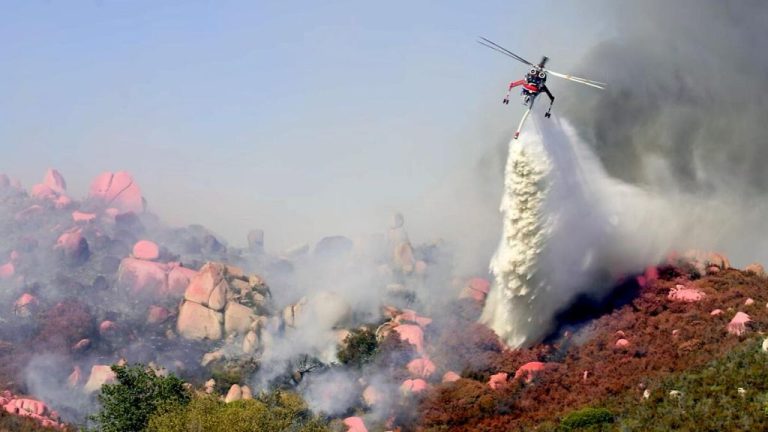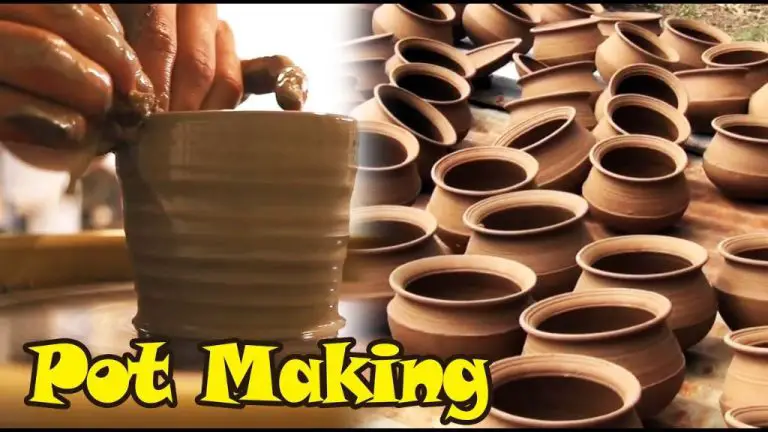What Is In Clay That Makes It Red?
Clay is a fine-grained natural material that forms from the decomposition of rocks over long periods of time. The structure and composition of clay make it plastic and moldable when wet, but hard and durable when fired and dried. Clay comes in a vast range of colors, but red and brown clays are some of the most commonly occurring types.
The distinct red hue of red clay comes from iron oxide compounds within it. Iron oxides, including hematite and magnetite, have a characteristic reddish-brown color that they impart to clay. Understanding the chemical composition of clay and how iron oxides color it provides insight into the properties and uses of this ubiquitous material.
Chemical Composition
Clay is primarily composed of fine-grained minerals like silica, alumina, and water. Silica refers to silicon dioxide, while alumina is aluminum oxide. These two minerals make up the largest portion of most clays. The chemical formula for kaolinite, one of the most common clay minerals, is Al2Si2O5(OH)4. This formula shows the combination of silica and alumina in clay’s composition.
In addition to silica and alumina, water is trapped in the molecular structure of clay minerals. Heating or firing the clay drives off the chemically combined water. The amount of water content affects the plasticity and workability of the clay.
Other minerals like iron oxides and calcium carbonate may also be present in smaller quantities in clay. Iron oxides are particularly important for producing red and brown colors in clay. Common iron oxides found in clay are hematite and goethite.
Iron Oxides
The main iron oxides responsible for the red color in clay are hematite and maghemite. Hematite is an iron oxide mineral with the chemical formula Fe2O3. It is one of the most abundant iron ores and is mined for industrial uses. Hematite gets its name from the Greek word for blood, haima, because of the red coloration it often shows. Maghemite is also an iron oxide mineral with the chemical formula Fe2O3. It is closely related to hematite and magnetite. Maghemite differs from hematite in that it has a cubic crystal structure compared to hematite’s rhombohedral structure. Both hematite and maghemite contain iron in the +3 oxidation state. This gives them their characteristic red-brown coloration.
The iron in these minerals bonds with oxygen atoms in the clay material to create the vivid red hues. As the concentration of iron oxides increases, the red color becomes more intense. Hematite in particular is valued for producing rich, warm red tones. The brightness and saturation of the red depends on the particle size of the iron oxide grains. Finer particles allow for a deeper color. Maghemite also produces bold reds, though they tend to have a more muted, earthy tone compared to hematite reds.
During firing of the clay, these iron oxide minerals undergo transformations that further enhance the redness. Hematite converts to maghemite around 950°F (510°C), while maghemite converts to hematite around 1840°F (1000°C). These reversible transformations between the two mineral phases result in optimal development of the red color.
How Iron Oxides Color Clay
The red color of iron-rich clays is caused by iron oxide molecules within the clay absorbing certain wavelengths of visible light. Iron oxide is present in these clays in the form of minerals like hematite, limonite, and maghemite.
When white light, which contains all wavelengths of visible light, shines on iron oxide, the molecules selectively absorb bluer wavelengths of light. The iron oxide cannot absorb or reflect these bluer colors. Instead, the wavelengths that are not absorbed, which tend toward red and orange, get reflected back to our eyes. This makes the clay appear red or orange to us.
So in summary, the iron oxide molecules act like tiny color filters, blocking out the bluer light waves while allowing more reddish wavelengths to pass through and reflect off the clay. This selective light absorption by the iron oxide is what gives red clay its distinctive hue.
Other Clay Colors
While red is one of the most common clay colors, clay can appear in a wide range of hues depending on its mineral composition. Here are some other common clay colors and what causes them:
White: White clay gets its color from the mineral kaolinite. Kaolinite clay contains very little iron oxide and other impurities, resulting in its white coloring. White clay is valued for its whiteness and for being very low-plasticity compared to other clays.
Brown: Brown clay contains more organic matter and iron oxides than white clay, giving it a rich brown hue. Different shades of brown clay occur depending on the ratios of the minerals present.
Yellow: Yellow clay gets its golden color primarily from the presence of the mineral limonite, an iron oxide hydrate. Limonite forms when iron minerals contact water and oxidize.
Gray & Blue: These cool-toned clays get their hues from high levels of the mineral illite or related clay minerals like bentonite. Illite-rich clay can form blue, green, or gray clays.
The specific mineral composition of clay deposits results in an array of natural color variations. By understanding what minerals influence color, potters can select local clays to achieve their desired aesthetic.
Firing Clay
The heating process, known as firing, has a significant impact on the final color of clay. As clay is fired at higher temperatures, chemical changes occur that intensify and fix its color.
At lower firing temperatures, minerals like iron oxide maintain their original chemical composition and the red hues of the raw clay remain subdued. However, once fired between 2,000-2,300°F, these minerals undergo an oxidizing reaction that causes them to brighten into a vivid red-orange color.
Further heating to higher temperatures between 2,300-2,500°F will fix these vibrant oxidized colors permanently in the clay. However, if firing occurs in a low-oxygen environment, the iron oxide undergoes a reducing reaction, which causes the clay to turn gray, brown, or black instead.
The final color of clay is therefore heavily dependent on both the firing temperature and atmospheric conditions inside the kiln. Mastering the intricacies of the firing process enables potters to control the chemical changes and achieve their desired colors.
Geographic Variances
The chemical composition of clay varies greatly depending on the geographic location and local geology. The concentration and type of iron oxides present in clay is a major factor determining the color. Red clay deposits are found most abundantly in tropical, heavily weathered regions with lots of rainfall and good drainage. The heavy rainfall leaches the iron oxides out of decomposing rocks and transports them down into the clay beds. The good drainage also exposes the iron oxides to oxygen, causing them to oxidize into red hues.
In many parts of Africa, South America, India and Australia, the clay is rich in iron oxides and fires to a deep red color. In other regions, the clay may be lower in iron or contain more organic material, firing to tan, brown or buff shades. The Pacific Northwest of the United States has substantial clay deposits, but they lack iron oxides and fire to white or light buff colors. Parts of Minnesota and Wisconsin have deposits of earthenware clays that fire red due to the presence of iron oxides.
Understanding the native geology and how it impacts clay coloration allows potters and artists to locate clay beds matching their desired characteristics. Selecting locally sourced clays also provides unique natural properties based on mineral variations in that region.
Uses of Red Clay
Red clay is commonly used to make bricks, pottery, ceramics and tiles. The red color gives bricks and roof tiles an earthy, natural appearance that is aesthetically pleasing in construction. Potters often mix in other minerals to create unique glazes on ceramics made with red clay. Its high iron oxide content makes red clay heat resistant, able to withstand the high temperatures of kiln firing during the ceramic production process.
Terracotta pottery and garden wares like flowerpots and planters are traditionally made from red clay for their attractive reddish-orange color. Sculptors may also choose to work with red clay for its rich hue. In many cultures, red clay is associated with life and fertility due to its earthy red tone.
Red clay bricks have been used in construction for centuries because they are durable and attractive. The Great Wall of China and Roman aqueducts used red clay bricks which have stood the test of time. Red bricks are still popular in architecture today for their classic look and naturally occurring vibrant color.
History
Red clay has been used throughout human history for pottery, construction, and decorative arts. Evidence of early man-made red clay objects date back over 25,000 years ago during the Paleolithic era. In the Neolithic period around 10,000 BCE, our ancestors discovered that firing natural clay produced stronger, more durable materials. This led to an explosion in clay pottery and ceramic arts, with red clay being a popular choice due to its bold, vibrant color.
In ancient Mesopotamia, Egypt, Greece, Rome and China, red clay was used not just for pottery but also for decorative bricks and roof tiles in architecture. The rich red color was associated with life and vitality. Terracotta warrior statues from 3rd century BCE China exemplify the skill achieved using red clay. Through the Bronze and Iron Ages, red clay continued to be the medium of choice for pots, sculpture and building materials.
As trade expanded to the New World, native South American cultures like the Inca also used red clay for their elaborate pottery. Later European colonists in North America relied on the natural red clay deposits to make bricks, cookware and tiles. In modern times, red clay remains an important material around the world for art, architecture and industrial uses.
Conclusion
In summary, the red color of clay is primarily caused by iron oxides in the chemical composition. Iron oxide molecules have a reddish-brown hue, so when clay contains high levels of iron oxides like hematite or maghemite, it takes on a red tone. The amount and type of iron oxides present impact how deep red the clay will be. Additionally, the geographic source of the clay affects the mineral content. Firing the clay at high temperatures deepens and fixes the red color. While red is a common clay color due to iron oxide, other mineral elements produce different colored clays. Ultimately, the chemical composition of a given clay deposit determines the potential colors it can achieve. The rich red tones of natural clay have made it a popular material for pottery, bricks, and other uses throughout human history. By understanding the critical role of iron oxides, we gain insight into the science behind clay’s vivid red hues.



